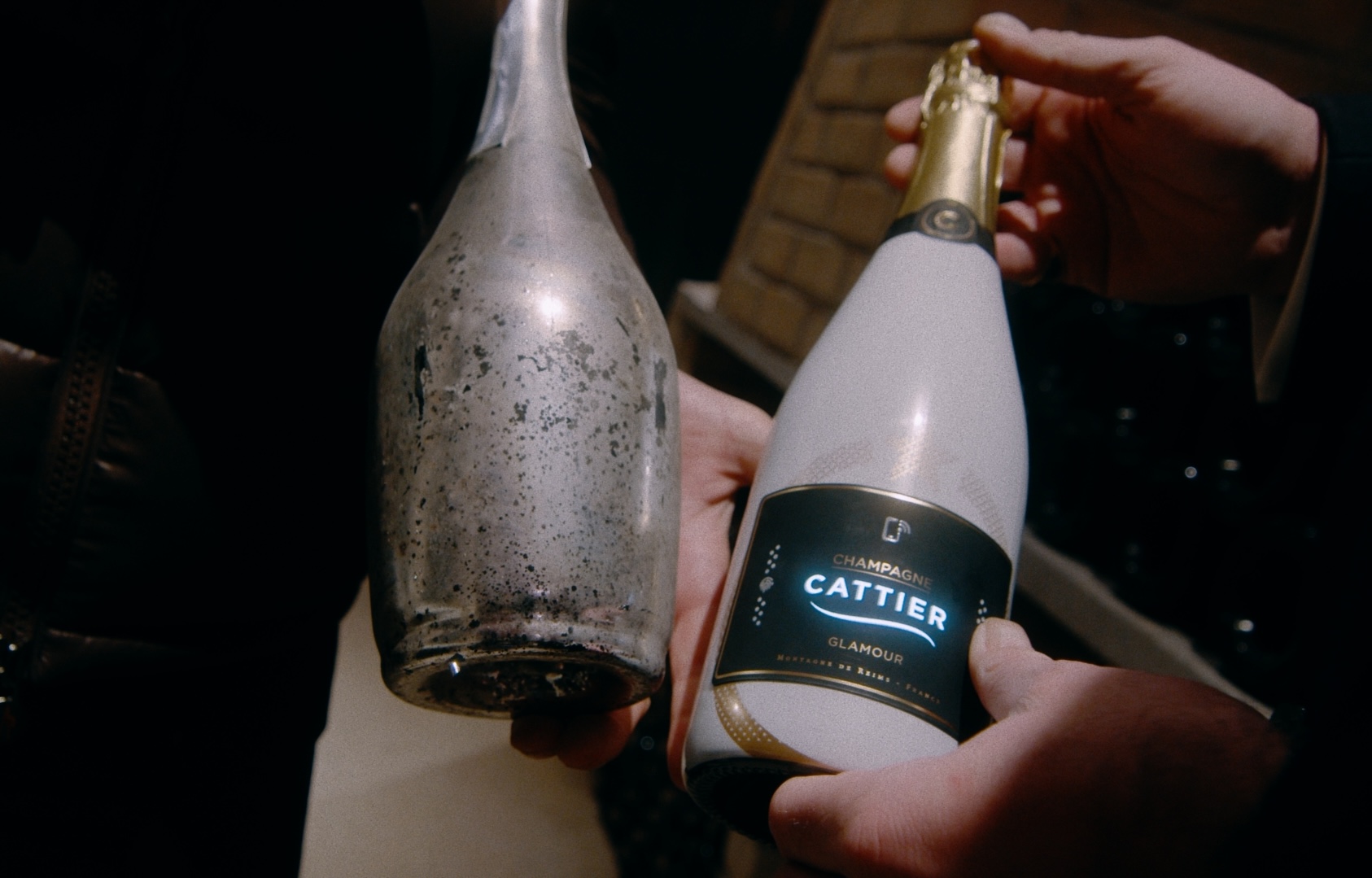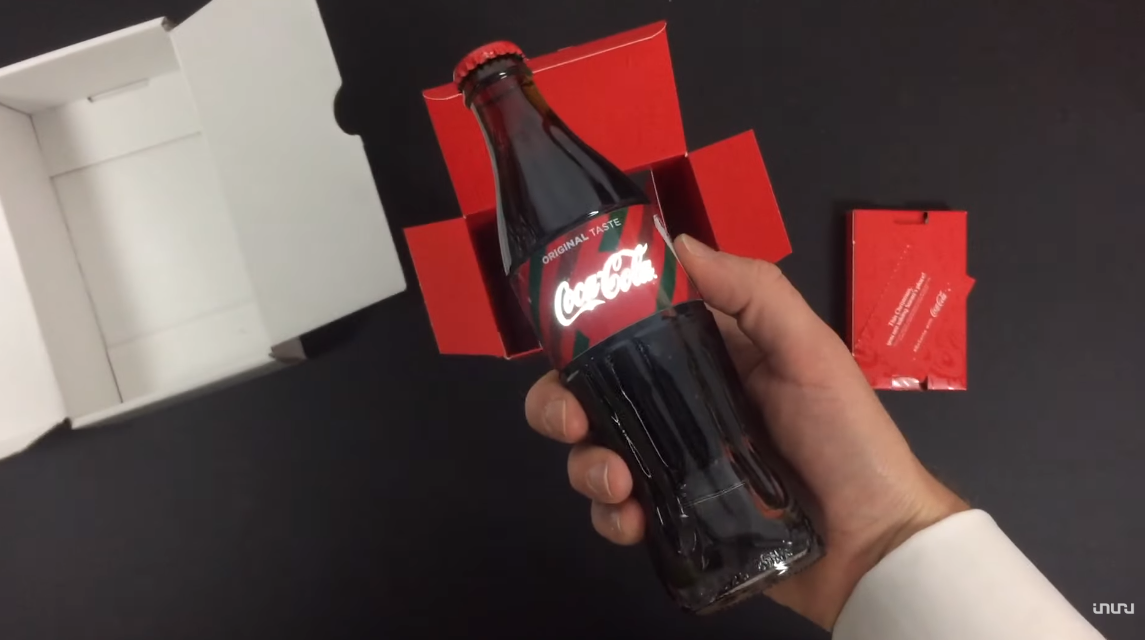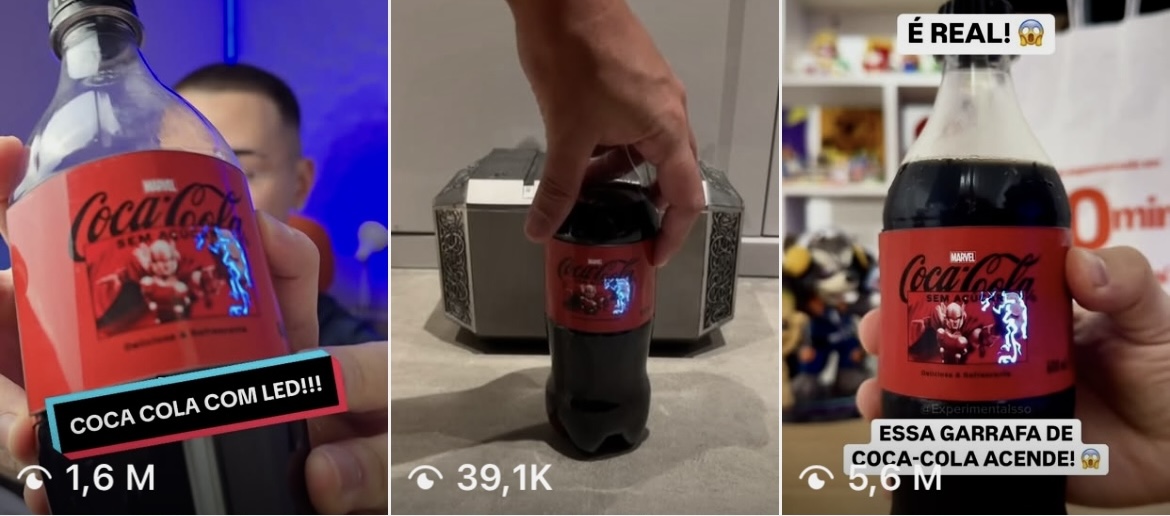Personalized packaging refers to packaging customized for a specific customer, segment, event, or use case through variable printing, tailored design, or smart technologies like printed OLED light. It increases engagement, enhances emotional connection, and creates more memorable product experiences than standard, non-personalized packaging.
For many years, personalization belonged almost entirely to digital marketing - dynamic ads, CRM automation, and recommendation engines. But between 2024 and 2025, a shift began. As competition intensified and digital channels became oversaturated, brands realized personalization could be even more powerful when translated into physical touchpoints, especially packaging.
McKinsey reports that companies that excel at personalization generate up to 40% more revenue from their marketing activities than average performers, highlighting personalization as one of the highest-ROI strategies available today.
Packaging, once treated as a static necessity, has become a dynamic storytelling medium. It shapes emotional expectations, influences purchasing decisions, and elevates the unboxing ritual. With technologies such as printed OLED illumination, variable printing, and interactive triggers, personalized packaging is emerging as a central pillar of modern marketing investment.

Personalized packaging refers to packaging adapted to a specific customer, micro-segment, region, or event through custom design, variable printing, limited-edition artwork, or interactive elements such as light, motion, or digital triggers. Its purpose is to make the product feel more relevant, intentional, and emotionally meaningful to the consumer.
Personalization can take many forms, from names printed on bottles to touch-activated luminous labels, and is increasingly supported by scalable manufacturing technologies.
To explore how packaging stands out visually and structurally, read here.
Personalized packaging is far more than an aesthetic choice. Its effectiveness is grounded in a set of well-documented psychological mechanisms that influence how people perceive, value, remember, and ultimately choose products. In marketing terms, personalization is powerful because it operates on both the emotional and the cognitive levels of the human mind. In consumer-behavior terms, it shortens decision-making time while simultaneously increasing satisfaction and perceived value.
1. Self-Relevance and the “For Me” Effect
Humans are wired to pay more attention to information that feels directly connected to their identity, preferences, or past experiences. This is known as self-relevance, and it’s one of the strongest drivers behind why personalization works so effectively across industries.
When packaging includes elements that reflect the consumer: a name, a cultural symbol, a preferred flavor, a seasonal motif, or even a personalized glow pattern, the brain categorizes the product as personally meaningful. This triggers a sharp increase in attention, emotional response, and cognitive engagement.

Industry research reinforces this: consumers consistently report that personalized experiences make them feel more understood, valued, and connected to a brand. Twilio Segment’s State of Personalization report found that after receiving personalized experiences, a majority of customers are more likely to become repeat buyers, and nearly half say they would purchase again even at a higher price.
Deloitte Digital similarly notes that brands investing in deeper personalization maturity (including experiential personalization, not just digital) see significant improvement in satisfaction, engagement, order value, and long-term loyalty.
In packaging, this means even simple variations - a colorway linked to an event, an edition tied to a city, or a glow pattern associated with a celebration - make the product feel instantly more relevant and desirable.
Personalized packaging doesn’t just stand out visually. It stands out personally, which is far more powerful.
2. The Endowment Effect: Personalization Creates Early Ownership
The endowment effect, a cornerstone of behavioral economics, states that people place higher value on items they feel they already “own.” Remarkably, this effect activates before actual ownership, even before purchase, if the product creates a sense of psychological possession.
Personalized packaging accelerates this process because it signals to the consumer: this product was made with you in mind. Something as small as a name, a symbol, or a unique light animation can shift the buyer’s perception from observing an object to connecting with their object.

This explains why:
Printed OLED illumination amplifies this effect: when a product lights up specifically at the consumer’s touch or motion, the sense of ownership becomes immediate and visceral. It creates an intimate moment of interaction - one the brain interprets as a form of recognition.
In a crowded retail environment, this emotional “ownership moment” is often what pushes the consumer from browsing to buying.
3. Emotional Memory: Packaging as a Storytelling Trigger
Emotions shape memory. According to Harvard Business Review’s research on emotional drivers, brands that successfully evoke emotions create deeper loyalty and longer-lasting recall.
Packaging plays an outsized role in this process because it is the first physical touchpoint a consumer has with a brand. It sets expectations, triggers feelings, and provides a sensory context for the entire product experience.
Personalized packaging, especially when enhanced with sensory elements like texture, contrast, motion, or illumination, transforms unboxing from a functional step into an emotional moment.

For example:
Because emotional experiences anchor more firmly in memory, personalized packaging increases:
Light, especially warm or animated light, enhances emotional encoding. Humans have a primal positive response to illumination, associated with safety, festivity, and connection. When packaging incorporates printed OLED light, it uses that instinctive attraction to create a lasting impression.
4. Reduced Cognitive Load: Personalization Simplifies Decisions
Cognitive load refers to the mental effort required to process information. In a retail environment overflowing with choices, consumers often experience decision fatigue - a state where too many options lead to either random choices or no decision at all.
Personalized packaging reduces cognitive load because it signals relevance immediately. The consumer intuitively understands:
This instant decoding allows the consumer to choose faster, with greater confidence, and with less internal friction. It’s not merely about the visual appeal but about simplifying the path to “yes.”
This is also why personalization increases conversion not only in digital channels but also at the physical shelf, during gifting, and in subscription or curated product flows.
When packaging tells the consumer “I’m the right choice for you”, the brain relaxes and the purchase becomes far more likely.
5. Social Identity, Sharing, and Status Signaling
Modern consumers, especially younger demographics, increasingly choose products that align with their identity and values. Personalized packaging enables consumers to express that identity, making the product feel culturally or personally aligned.
This becomes even more powerful when personalized packaging is photogenic or interactive (e.g., printed OLED light). People naturally want to share experiences that feel unique or special, and personalized packaging becomes a content moment - something to photograph, post, or show others. In the spirits and nightlife industries, packaging with light becomes a social signal in itself - a silent visual announcement of status, celebration, or belonging.

Rising Consumer Expectations
A 2024 BCG survey of 23,000 consumers found that people welcome personalization when it delivers value and does not misuse their data. Personalized packaging meets these expectations particularly well because it does not require sensitive personal information while still offering strong emotional relevance.
Competitive Shelf Pressure
Retail shelves, especially in spirits, cosmetics, and travel retail, are crowded. Personalized packaging captures attention faster, improves dwell time, and increases perceived premium value by signaling uniqueness.
Gifting and Celebration Moments
Personalization dramatically enhances gifting value by turning a product into a story: not just “a bottle” or “a box,” but this bottle made for you or for this night. Printed OLED light amplifies this effect by adding visual warmth and ritualistic symbolism - a small “show” that happens right in the recipient’s hands.
Technological Scalability
Digital printing, micro-runs, NFC/AR layers, and printed OLED illumination now make personalization scalable for global brands. What once required manual craft can now run across tens or hundreds of thousands of units with controlled cost and high reliability.
Personalized packaging is moving into a new era. One where experiences are not only visual but interactive, sensory, and dynamic. Until recently, personalization meant changing graphics, text, colors, or print runs. Today, driven by advances in materials science and microelectronics, packaging can now express emotion, respond to human touch, and create theatrical moments that feel almost cinematic. This shift is being led by technologies such as printed OLED light.
Printed OLEDs mark a fundamental transformation in what packaging can do. Unlike traditional LEDs that require bulky components, wires, or rigid structures, printed OLEDs are ultra-thin, flexible, lightweight, and can be integrated directly onto labels, foils, boxes, and curved surfaces. This makes it possible for packaging to glow, pulse, animate, or activate on demand without changing the form factor or compromising recyclability.
Instead of light being an external add-on, it becomes part of the packaging itself, opening the door to unprecedented creative and commercial possibilities.
1. Real-Time Personalization
Packaging that reacts to movement, environment, or time of day for example, labels that only light up at night or in specific temperature ranges.
2. Hyper-Micro Editions
Small, highly targeted production runs aligned with local events, collaborations, influencers, or niche communities.
3. Phygital Packaging
Blending physical packaging with digital experiences via NFC, QR, or AR. Packaging becomes the entry point to customized journeys, rewards, or stories. Deep dive here.
4. Sustainable Personalization
Printed OLEDs enable low-energy, thin, and recyclable personalization methods, aligning premium experiences with sustainability expectations.
Personalized packaging delivers strong ROI because it enhances how consumers interpret value at the exact moment of consideration. When a product feels tailored or intentional, people approach it with a higher degree of interest and confidence, which leads to faster purchase decisions and fewer comparisons on the shelf. This sense of relevance makes personalized packaging especially powerful in categories where emotions and aesthetics heavily influence buying behavior.
It also elevates perceived quality. Even subtle forms of personalization make a product feel more premium and more thoughtfully crafted, which strengthens the buyer’s impression of value and supports higher price points. For brands competing in saturated retail spaces or in channels like duty free, gifting, or luxury beauty, this perceived upgrade can translate directly into higher margins and quicker sell-through.
Another factor behind its strong ROI is memorability. Packaging that incorporates individual details or interactive elements creates a moment the consumer is more likely to remember and associate positively with the brand. Because personalized packaging feels unique rather than mass-produced, consumers often keep it longer, display it, or share it with others, extending the life of the experience beyond the initial purchase.
Printed OLED light amplifies these effects. Illumination adds a sensory dimension that standard personalization cannot replicate, making the interaction more vivid and emotionally charged. A brief glow or animation when the package is touched turns a simple encounter into a small event, something that stands out in memory and is naturally shared. This combination of emotional resonance, elevated perceived value, and extended visibility is what ultimately makes personalized packaging, especially when enhanced with light, a consistently high-return investment for modern brands.
Personalized packaging has become a cornerstone of modern marketing investment. It blends psychology, design, ritual, and technology to create unforgettable product experiences. With printed OLED illumination, brands can personalize packaging not only visually but sensorially through light, motion, and storytelling.
The future of personalization is physical, interactive, and deeply human. Brands that invest now will define the next decade of consumer experience.
Contact us to design customised, light-enabled packaging that sets your brand apart.
1. What is personalized packaging?
Personalized packaging is the customization of packaging for specific customers, needs, or events using unique designs, variable printing, or smart technologies like printed OLED light.
2. Why is personalized packaging effective?
It deepens emotional engagement, increases visibility, simplifies decision-making, and elevates gifting value.
3. How do printed OLEDs enhance personalization?
They add illumination, interactivity, and emotional impact, turning packaging into a small, memorable experience rather than a passive container.
4. Which industries use personalized packaging most?
Spirits, cosmetics, luxury goods, FMCG, and gifting products are leading in adopting personalized and illuminated packaging concepts.
5. Is personalized packaging scalable?
Yes. Digital printing, data-driven artwork, and printed OLED labels allow brands to personalize at mass-production scale without losing control of cost or quality.
SOURCES:
(2)https://www.inuru.com/post/post-packaging-ideas-bar-drink-bottles
(3)https://gopages.segment.com/rs/667-MPQ-382/images/State-of-personalization-report_reduced.pdf
(5)https://www.investopedia.com/terms/e/endowment-effect.asp
(6)https://hbr.org/2015/11/the-new-science-of-customer-emotions
(7)https://www.inuru.com/post/oled
(8)https://www.bcg.com/publications/2024/what-consumers-want-from-personalization
(9)https://www.inuru.com/post/post-what-is-interactive-packaging-guide-